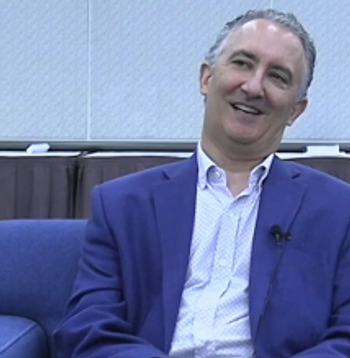
The User’s Revolt Against DSM-5: Will It Work?
When it comes to DSM-5, experience has proven conclusively that the APA will not attend to the science, evaluate the risks, or listen to reason. A user’s revolt has become the last and only hope for derailing the worst of the DSM-5 suggestions.
When it comes to DSM-5, experience has proven conclusively that the American Psychiatric Association (APA) will not attend to the science, evaluate the risks, or listen to reason. A user’s revolt has become the last and only hope for derailing the worst of the DSM-5 suggestions.
Why might this work? The APA budget depends heavily on publishing profits. DSM’s sell over 100,000 copies and generate about $5 million in profits even in a dull year. This is multiplied several fold at the golden moment when any new DSM is introduced. Meaningful reform will occur only if DSM-5 faces the serious risk of a user’s boycott (replacing it with what will be the freely available ICD-10-CM). Certainly, in any sensible world, this threat should have no part in the way diagnostic decisions are made. But DSM-5 is more of an Alice in Wonderland world-what should count least (or not at all) may now count most.
Will
The only serious challenge to this APA obstinacy is the
The APA stance will also be influenced by how devastating is the media response and the public reaction. Reporters quickly come to understand the great public health risks posed by DSM-5 suggestions that all promote diagnostic inflation and loose prescription habits. Actually anyone not working on DSM-5 seems to appreciate this almost instinctively. News stories about DSM-5 are uniformly negative unless they are generated by APA press releases or appear in its own house organ. The question is how much and how prominent will be the press coverage generated by the DSM-5 petition. My guess is that it will be extensive and extremely critical of DSM-5 and may embarrass it into reform. But this remains to be seen.
And there is an important caveat here. My hope is that press coverage doesn’t tar all of psychiatry (and feed the harmful anti-psychiatry movement) just because DSM-5 is such a mess. Psychiatry is essential and extremely helpful-DSM-5 is no more than an unfortunate and temporary aberration. The petition is targeted against DSM-5, not against psychiatry. APA’s likely defensive response to the petition will be to dismiss it as the work of anti-psychiatry agitators. This should not be taken seriously. The effort is intended to save psychiatry from the harm being done to it by DSM-5.
This brings us finally to the numbers game. The petition was introduced in the most obscure way possible-on Saturday, October 22, with no fanfare, no Facebook, no Twitter, no Web site, no press release, nothing but a naked announcement. It was launched by extremely well meaning people who had correctly identified the problems posed by DSM-5, but who did not have the resources or technical expertise to launch a well-organized media and social networking campaign. The petition gained the support it has largely on its own spontaneous steam.
At first, almost no one noticed the petition but soon it began attracting an average of over 250 signers per day and has already collected a total of more than 5000 signatures.
The good news is that this steady growth has occurred mostly by spontaneous electrical word of mouth. Many blog sites have picked up the petition, 17 additional mental health organizations have endorsed it, and people must be busy passing it on to their colleagues. This informal beginning is now slowly being augmented by more sophisticated press, Facebook, Twitter, and Web site methods. Press interest has already emerged spontaneously with very favorable stories in Nature News and Medscape and many other reporters are now picking up on the story.
The DSM-5 petition clearly has legs-but whether it can fly is still an open question. Its reach will depend on two things-how many people sign on and then how many additional colleagues each signer recruits. It is unknowable whether there will be a weak or powerful network effect. If each signer encourages only one (or none) other colleague, growth will be slow and linear and may top out at 10,000 to 20,000. This is a very substantial number of professionals frightened by DSM-5 and certainly should chasten APA to much greater caution-but given past performance it probably won’t have much effect. In contrast, let’s suppose each signer encourages five others to sign and two actually do. Then growth will become rapid and exponential and will soon force APA into a serious and much belated rethink of its worst suggestions.
These are very early days. It is far too soon to predict the fate of the DSM-5 petition and the magnitude of its potential impact. It is certainly quite encouraging that its early growth has been so steady without really trying-and that the many additional opportunities for Internet and media dissemination have not yet been fully exploited. Clearly, there is room for very substantial upside growth once the petition is more efficiently disseminated.
But there is also no room whatever for complacency-only a really massive response will force the sleeping leadership of APA to take the corrective action of rejecting the riskiest of the DSM-5 proposals. For anyone seriously concerned about the unintended consequences of DSM-5, the bottom line is clear. Please send the petition (
Exponential growth is the essential key to the petition’s success-and so far the growth of the petition has been no more than linear. Only the resounding voice of the people will save DSM-5 from itself.
Newsletter
Receive trusted psychiatric news, expert analysis, and clinical insights — subscribe today to support your practice and your patients.

















